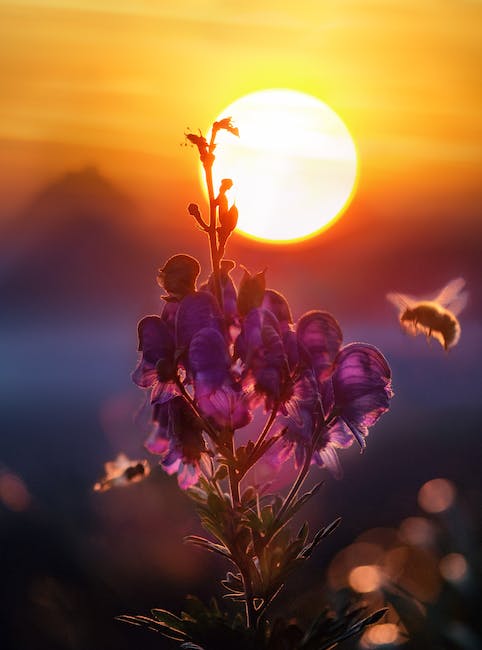Introduction
Pollination is an essential process for plants, animals and humans alike. Without it, food sources and the natural cycle of life would be severely hampered. Fortunately, there are several insects that play a vital role in helping to transfer pollen from one plant to another, allowing for successful pollination to occur. In this article, we’ll discuss five different insects and their importance in the pollination process.
1. Bees
Bumblebees
Bumblebees are a type of bee that is highly effective at pollinating flowering plants. They have a unique feature in that they can flop their wings quickly to generate heat, which allows them to even pollinate plants during cold climates. Bumblebees are important to the pollination process as they visit multiple plants at once and can assist in the cross-pollination of different species of plants.
Honey Bees
Honey bees are another species of bee, known for producing honey and growing in large colonies. Honey bees are highly efficient pollinators in that they can quickly move from one flower to the next and even transfer pollen within the same species of plant. Honey bees also have an indirect symbiotic relationship with plants as they require the nectar and pollen of flowers to survive.
2. Ants
Carpenter Ants
Carpenter ants are small and industrious, often found in forests, gardens, and homes. But did you know that they contribute to the pollination process too? Carpenter ants are great for spreading pollen to different plants, especially those with larger or heavier flowers that bees cannot access. They move quickly and carry most pollen on their bodies, transferring it from one plant to the next.
Harvester Ants
Harvester ants are a type of ant that consume the fruits of plants, as opposed to the pollen. But this doesn’t mean they are excluded from the pollination process. While they are consuming the fruits, the harvester ants will often transfer the pollen they have acquired on their body to other plants and thus help with the pollination process.
3. Wasps
Wasps are closely related to bees, and they also help with the pollination process. Wasps specialize in pollinating specific kinds of flowers, making them highly efficient at assisting certain species of plants. Wasps tend to have a longer tongue than other pollinators, and they are also more agile, allowing them to move quickly between different flowers.
4. Flies
Flies are typically regarded as pesky and annoying, but they also play a role in the pollination process. Flies tend to over the surface of a flower, sipping the nectar and pollen from it. While doing so, they will often transfer pollen from one flower to the next, allowing for successful pollination to occur.
5. Beetles
Beetles are considered one of the earliest pollinators in history, as they’ve been helping plants reproduce even before the existence of bees and wasps. Beetles have a unique feature in that their bodies are covered in scales and hairs, which allows them to pick up a lot of pollen and transfer it quickly and effectively from one flower to the next.
People Also Ask
What insects help with pollination?
Insects that help with pollination include bees, ants, wasps, flies and beetles.
How can insects help with pollination?
Insects help with pollination by transferring pollen from one plant to another, allowing for successful pollination to occur.
Are all insects useful for pollination?
No, only specific species of insects are useful for pollination. The most common ones are bees, ants, wasps, flies, and beetles.
Which species of bee are the most important for pollination?
Bumblebees and honey bees are the two species of bee that are most important for pollination. They both have unique features that make them efficient at transferring pollen from one plant to the next.
How can humans help with pollination?
Humans can help with pollination by planting more pollinator-friendly plants, protecting pollinators from pesticides, and creating habitats for beneficial insects.
Conclusion
The pollination process is an essential part of life on earth, and insects are a key contributor. By understanding more about the different types of insects that help with pollination, we can work together to better protect these important species and ensure that the pollination process continues to be successful in the future.

